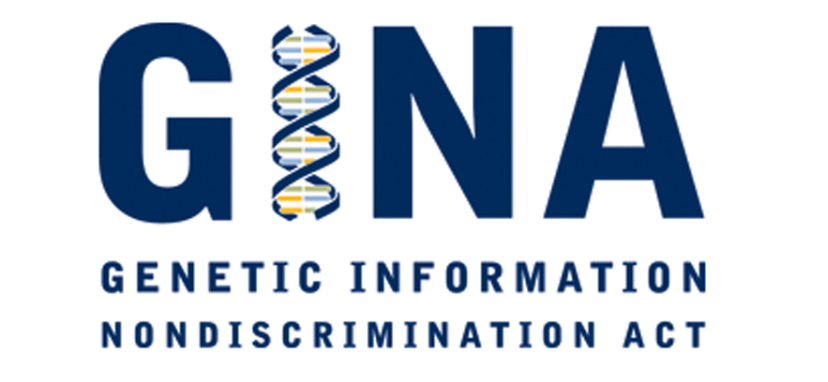WGU C202 OA Study Guide II - 2025 | Insights on Compensation and Immigration📖
Understanding laws that shape the workforce is crucial for anyone studying WGU C202 OA or preparing for WGU C202 OA questions. Three key laws have shaped human capital management in the U.S.: Direct and Indirect Financial Compensation, The Genetic Information Nondiscrimination Act of 2008 (GINA), and The Immigration Reform and Control Act of 1986 (IRCA). The apparently complicated legal terms will become understandable with our simple breakdown that avoids eye-straining complexity.
This article explores three important topics in human resource management and employment law that impact workplace compensation, fairness, and hiring practices:
- Direct and Indirect Financial Compensation: Employee compensation can be categorized into direct (such as salaries, wages, and bonuses) and indirect (such as health benefits, retirement plans, and paid leave). Understanding these forms of compensation helps businesses attract and retain talent effectively.
- Genetic Nondiscrimination Act of 2008 (GINA): This U.S. law protects individuals from genetic discrimination in health insurance and employment. It prevents employers from making hiring, firing, or promotion decisions based on genetic information.
- The Immigration Reform and Control Act of 1986 (IRCA): This law was introduced to regulate immigration and employment practices in the U.S. It requires employers to verify employees’ work authorization while prohibiting discrimination based on citizenship or national origin.
This article analyzes three workplace topics and their effects on employees along with their employers and workforce members. The following introduction offers a fundamental explanation of human capital law to students future HR professionals and general workplace rights enthusiasts who prefer simple explanations. Let’s get started!
How to Use This Guide for the WGU C202 OA Exam?📖
The C202 Managing Human Capital OA exam at WGU evaluates your understanding of human resource management, compensation systems, and employment laws. This guide simplifies the key concepts of direct and indirect financial compensation, the Genetic Nondiscrimination Act of 2008, and The Immigration Reform and Control Act of 1986 to help you grasp the topics tested in the exam.
We also provide exam-style questions and practical applications to ensure you’re fully prepared for the questions on the WGU C202 OA exam.

Direct and Indirect Financial Compensation For C202 OA 📝
Workers receive compensation through what they get for their work duties. Employee compensation goes beyond monetary payment since there exists more to the story. There exist two primary categories of compensation consisting of direct financial compensation along with indirect financial compensation. Every individual involved in workplace operations must understand these two aspects to help make career and business decisions.
Direct Financial Compensation
What is Direct Compensation? The earnings that employees receive from their employment represent their direct compensation. Payment constitutes the simplest way employees receive financial returns for their work activities. Direct compensation exists as the true financial awards that employees obtain for their work tasks including salaries hourly wages and commissions.
Examples of Direct Compensation:
- Base salary – The fixed amount paid to an employee regularly.
- Hourly wages – Employees receive a set amount per hour worked.
- Bonuses – Extra money awarded for performance, such as meeting sales targets.
- Commissions – A percentage of sales revenue earned by employees, often seen in sales roles.
- Overtime pay – Extra payment for working beyond standard hours.
Performance-Based Rewards: Many companies link direct compensation to performance. Employees who exceed expectations or contribute significantly to business goals may receive raises, bonuses, or commissions. This system encourages motivation and productivity.
Tax Implications: Since direct compensation is money received as income, it is taxable. Employees must report wages, salaries, and bonuses on their tax returns and may have deductions applied, such as income tax and social security.
Indirect Financial Compensation
What is Indirect Compensation? Indirect forms of compensation exist in a subtler manner than direct compensation does. Employers give extra advantages to workers through financial value benefits which bypass typical salary payments. The provided benefits create substantial improvements in employee work-life harmony and lifestyle health benefits.
Examples of Indirect Compensation:
- Health insurance – Coverage for medical, dental, and vision expenses.
- Paid leave – Includes vacation time, sick leave, and personal days.
- Retirement benefits – Employer contributions to 401(k) or pension plans.
- Tuition reimbursement – Helps employees with educational expenses.
- Student loan repayment assistance – Some employers assist with student loan payments.
- Non-financial benefits – Things like gym memberships, company-sponsored trips, or even free parking.
Not Performance-Based: The performance level of employees usually does not affect their receipt of indirect compensation benefits. The benefits go to employees regardless of their work performance levels. Health insurance coverage extends to every eligible employee at the company regardless of their achievement level.
Tax Implications: One of the perks of indirect compensation is that many benefits come with tax advantages. For example, health insurance and retirement contributions often have tax exemptions or deductions, making them financially beneficial for employees.
Key Differences Between Direct and Indirect Compensation
Factor | Direct Compensation | Indirect Compensation |
Nature of Payment | Cash payments | Non-cash benefits |
Examples | Salary, wages, bonuses | Health insurance, retirement plans, paid leave |
Performance-Based | Yes, often linked to performance | No, usually standard for all employees |
Tangibility | Tangible, immediate | Often less visible but valuable |
Impact on Employees | Direct financial support | Enhances quality of life and well-being |
Tax Implications | Subject to income tax | Often tax-free or tax-advantaged |
Why it Matters For C202 OA
A complete compensation package must combine the elements of direct as well as indirect financial rewards. Employees receive fair incomes through direct compensation while indirect compensation creates satisfied workers with high job retention and better health. Most candidates judge employment offers through their benefits plans together with their compensation rates.
Organizations that provide both direct and indirect compensation rewards receive more satisfactory and enthusiastic staff members. The provision of competitive pay serves business needs because it enables businesses to attract skilled employees and keeps them on staff thus reducing staff turnover and maximizing productivity.
Students who aim to take WGU C202 OA assessments or need information about WGU C202 OA questions should master the basics of these two compensation types. Organizations need to monitor their compensation methods regularly because evolving market conditions demand both productivity support for their staff and competitive compensation benefits.
The Genetic Information Nondiscrimination Act of 2008 (GINA) For C202 OA 📝
Modern scientific breakthroughs let us investigate genetic information better than any previous period in history. The power supplied by genetic testing creates uncertainty about potential discriminatory practices by employers or insurance organizations. The Genetic Information Nondiscrimination Act of 2008 (GINA) exists to safeguard individuals from such discrimination.

What is GINA?
The U.S. federal law GINA serves to stop genetic discrimination in health insurance coverage as well as employment contexts. The new legislation received approval from the president on May 21, 2008 before its November 21, 2009 effective date. Through this law, people may pursue genetic testing as well as medical breakthroughs without experiencing discrimination.
Why Was GINA Created?
The drafters of GINA introduced the legislation to counteract livelihood and insurance company worries about improper utilization of genetic information. Employers could prevent a person from getting hired if their genetic test revealed elevated disease risk while insurance companies had the power to exclude coverage for such individuals. GINA eliminates these risks by making such practices illegal.
The law creates paths for people to perform genetic tests for early disease diagnosis which leads them to needed medical treatment. The purpose of GINA is to block genetic susceptibility from becoming a foundation that reduces employment opportunities or health services access.
Key Provisions of GINA
- Protection in Health Insurance
- Health insurers cannot deny coverage or charge higher premiums based on genetic information.
- Insurers cannot request or require genetic testing.
- Applies to employer-sponsored health plans, individual insurance, and Medicare.
- Protection in Employment
- Employers cannot use genetic information in hiring, firing, job placement, or promotions.
- It is illegal to ask employees or job applicants for their genetic information.
- Employers must keep genetic information confidential if they come across it.
- Employers are prohibited from making decisions based on a person’s family medical history or genetic risks.
Legislative History
- The bill passed the Senate on April 24, 2008, with a vote of 95-0.
- It then passed the House of Representatives on May 1, 2008, with a vote of 414-1.
- President George W. Bush signed GINA into law on May 21, 2008.
What Counts as Genetic Information?
GINA protects various types of genetic data, including:
- Results from an individual’s genetic tests.
- Genetic test results of family members.
- Family medical history (since it can indicate genetic risks).
- Information about genetic services received (such as counseling or screening).
- Information related to genetic risks from a fetus or embryo.
Implementation and Enforcement
- The Equal Employment Opportunity Commission (EEOC) enforces GINA’s employment protections.
- The law applies to employers with 15 or more employees.
- Regulations governing employment aspects of GINA took effect on January 10, 2011.
- Employees who experience genetic discrimination can file complaints with the EEOC and seek compensation.
Exceptions to GINA
The protection scope offered by GINA comes with certain specific exemptions that every individual should understand:
- Life, disability, and long-term care insurance are not covered under GINA. Insurers in these areas can use genetic information to make decisions.
- The employment provisions in GINA do not apply to the U.S. military since it is exempt yet the personnel can use genetic information when assessing job requirements.
- Small businesses with fewer than 15 employees are not covered by the employment protections.
- The law allows employers to obtain genetic information by accident since GINA does not see it as breaking the rules through eavesdropping or unintended discovery.
- Genetic testing may be required in certain legal cases or under federal laws concerning workplace safety.
Impact on Employment Practices
GINA significantly influences employment practices by ensuring that genetic information cannot be used as a factor in hiring, promotions, job assignments, or terminations. Employers must:
- Avoid acquiring genetic information about employees and applicants.
- Store any obtained genetic data separately from personnel files.
- Train HR personnel and managers on handling sensitive genetic information.
- Prevent retaliation against employees who report discrimination or participate in investigations.
Failure to comply with GINA can result in compensatory and punitive damages, fines, and lawsuits.
Why GINA Matters For C202 OA
Through GINA people benefit from genetic testing for medical treatment because the legislation ensures discrimination will not occur. The knowledge of genetic risk factors for serious illnesses including cancer or heart disease proves essential because patients can benefit from early diagnosis through genetic testing. Because of GINA individuals can access genetic information for medical purposes without endangering their employment position or health coverage benefits.
For students preparing for WGU C202 OA and WGU C202 OA questions, understanding GINA is vital for grasping how laws shape human capital management. This law remains an essential part of workplace ethics and healthcare policies in the U.S.
Tired of reading blog articles?
Let’s Watch Our Free WGU C202 Practice Questions Video Below!

The Immigration Reform and Control Act of 1986 (IRCA) For C202 OA 📖
Immigration serves as a core concern in United States policy while the legislation known as the Immigration Reform and Control Act of 1986 (IRCA) commonly referred to as the Simpson-Mazzoli Act established major advancements in immigration policy standards. IRCA achieved its status as law after President Ronald Reagan signed it on November 6, 1986, and thus represented the first significant reform of U.S. immigration laws in decades. IRCA established a system of broad legal modifications between illegal immigration control and amnesty programs for some undocumented immigrants.
Key Provisions of IRCA
1. Employer Sanctions
IRCA delivered its biggest effect through employer sanctions that punished businesses that deliberately hired undocumented immigrants. Businesses operating in the U.S. did not face any legal restrictions regarding hiring undocumented workers until this point. IRCA created two main measures by outlawing both employer action of knowingly hiring unauthorized workers and establishing format penalties against rule violations.
To enforce this, employers were required to verify the identity and work eligibility of all new hires by examining specific documents, such as:
- U.S. Passport
- Certificate of U.S. Citizenship
- Certificate of Naturalization
- Resident Alien Card (Green Card)
These requirements led to the creation of the I-9 Employment Eligibility Verification Form, which all employees must complete upon hiring.
2. Legalization (Amnesty Program)
A principal component of IRCA included its legalization initiative as it granted legal status to specific undocumented immigrants. The immigration program granted lawful status to foreign nationals who maintained continuous residence in the United States before January 1st, 1982 together with selected eligibility factors. Unlawful immigrants could become eligible for permanent residence status that subsequently allowed them to pursue U.S. citizenship.
- Nearly three million individuals applied for legalization under IRCA.
- The majority of beneficiaries were of Hispanic descent.
3. Increased Border Security
Recognizing that enforcement was key to immigration control, IRCA also allocated resources to enhance border security. This included:
- Increased budgets for Border Patrol operations.
- Additional resources for the Department of Labor to monitor compliance with employment regulations.
- Stricter monitoring of workplaces to prevent employment of undocumented workers.
4. H-2 Visa Categories for Temporary Workers
The IRCA restructured the H-2 visa category, splitting it into:
- H-2A Visa – for temporary agricultural workers.
- H-2B Visa – for temporary non-agricultural workers.
This distinction allowed for better management of temporary labor shortages in specific industries.
Historical Context and Impact of IRCA
The IRCA served as the most extensive immigration policy reform of the United States since the McCarran-Walter Act of 1952. The law achieved bipartisan consensus in order to strike a balance between enforcement and legalization measures.
- Impact on Immigration: Many millions of undocumented immigrants received legal status under IRCA which transformed the makeup of the United States labor force.
- Challenges in Enforcement: Employer sanctions implementation faced inconsistent enforcement so employers continued to violate the law through illegal employment procedures.
- Border Control Limitations: Despite increased funding, illegal border crossings persisted, highlighting the need for further immigration reforms in subsequent years.
Reagan’s Executive Action on Immigration
The main flaw of IRCA was its failure to establish a path for children who qualified for amnesty under the legalization provisions. President Reagan conducted an executive order in 1987 that offered deferred deportation to young people below eighteen years old who were eligible:
- Were living with both parents who were legalized under IRCA.
- Were living with a single parent who was legalizing.
This affected nearly 100,000 families and set a precedent for future immigration-related executive actions.
Importance For C202 OA
The Immigration Reform and Control Act of 1986 was a landmark piece of legislation that sought to address both the issue of illegal immigration and the need for legal pathways to residency. By introducing employer sanctions, legalization programs, border security measures, and temporary worker visas, IRCA attempted to balance enforcement with opportunity.
For students studying WGU C202 OA and reviewing WGU C202 OA questions, understanding IRCA is essential for grasping the complexities of immigration policies and workforce regulations. Although IRCA brought about significant changes, it also exposed challenges that still influence immigration debates today.

Final Thoughts: Ace Your WGU C202 OA with Confidence 📖
Your understanding of Direct and Indirect Financial Compensation, GINA, and IRCA should be solid after this fundamental exploration of these workplace-shaping laws. These topics demonstrate practical impacts that affect both workers and their employers as well as entire businesses. These laws establish various aspects of today’s labor system by determining both check structure information and employment rights as well as immigration regulations.
The WGU C202 OA requires you to have mastered all necessary concepts so review them carefully. Every essential topic in your final OA must be fully grasped therefore dedicate enough study time to these subjects. Your mastery of these concepts about GINA’s genetic protection and IRCA’s immigration changes alongside compensation motivators will prove useful now during your exams and in your future professional work.
The upcoming exam requires you to use deep breaths and an inspection of your notes before tackling it confidently. You’ve got this. The C202 OA at WGU brings good luck for your success. Hit those goals with flying colors!






